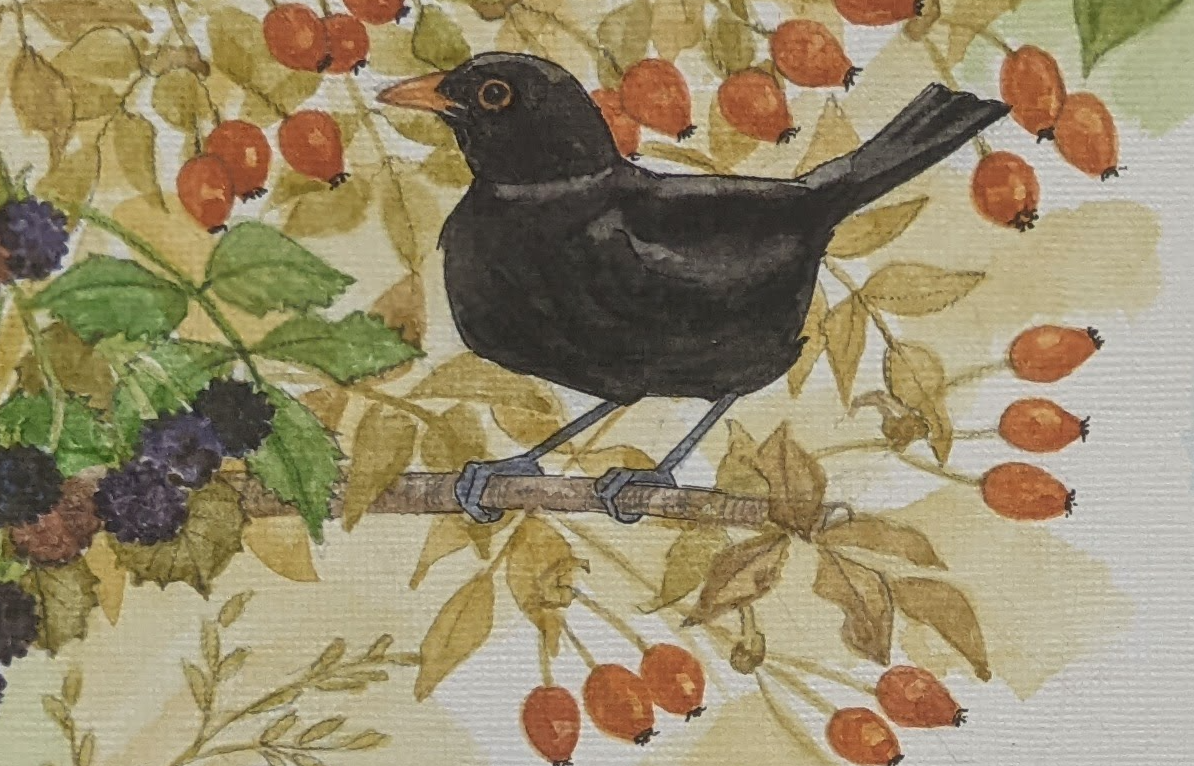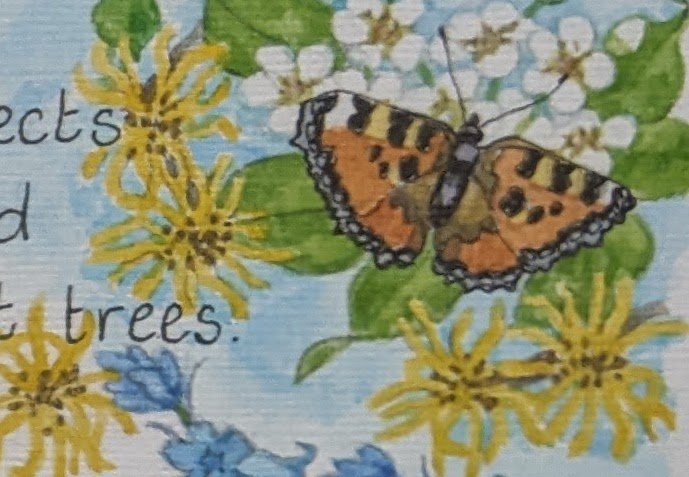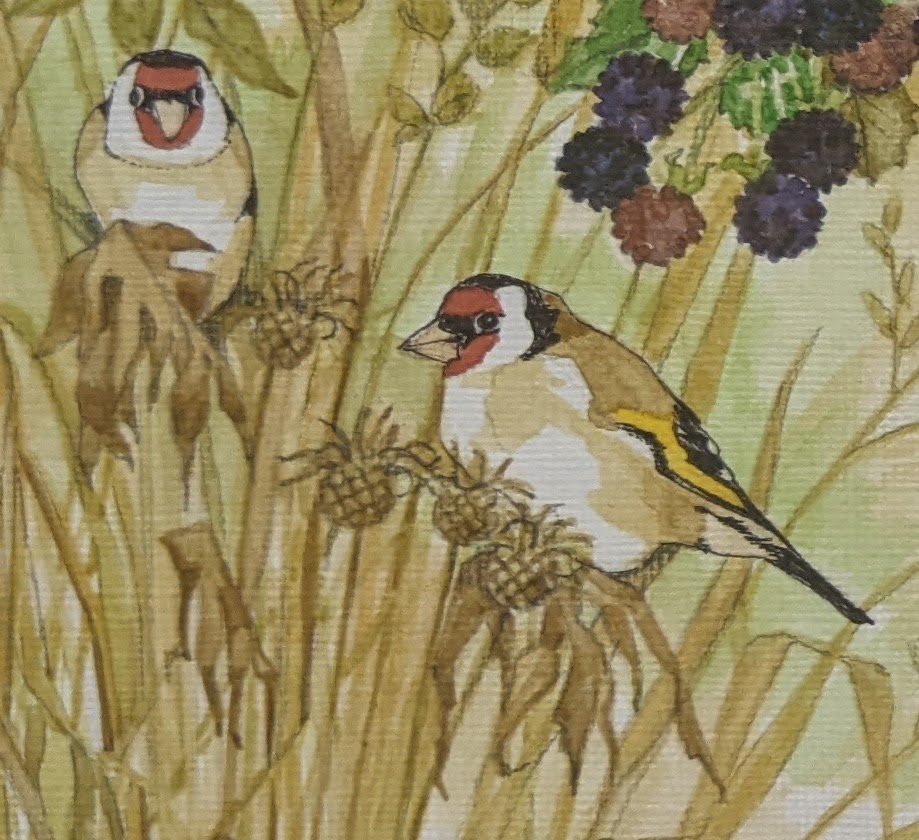Bringing nature into Wilcher Close
HUGS are working with Soha, The Poet’s Trail and residents of Wilcher Close in East Hagbourne to encourage greater biodiversity.
Can you spot these in the painting above?
Orange Tip Butterfly and the Garlic Mustard plant that its caterpillars feed on. Clue - left hand side for the plant and it has small white flowers.
Marbled White Butterfly and the Knapweed that it feeds on. Clue - Knapweed is a purple flower and Marbled Whites are black and white.
Daisies and dandelions - amazingly helpful wildflowers for insects to feed on from Spring onwards.
Two pairs of birds - wrens and great tits. Can you tell which is which?
Peacock Butterfly. Clue - it’s enjoying feeding on the nectar from Buddleia (one of Roger’s favoruite plants) and it has ‘eyes’ on its wings like those on the feathers of a peacock.
Comma Butterfly. Clue - it’s also feeding on Buddleia and has beautiful curved edges to its wings. The caterpillars of the Comma and the Peacock both eat nettle. Can you leave some to grow in your garden?
What have we planted?
Semi-dwarf Fruit Trees - Apples (Katy and Suberb), Plum (Victoria) and Cherry Plum
Edible hedging - Pear, Cherry Plum, Hazel, Gooseberry, Blackberry, Crab Apple, and Dog Rose
Wildflowers in the sun - Wild Marjoram, Meadow Vetchling, Common Agrimony, Betony, Field Scabious, Meadow Cranesbill, Knapweed, Red Valerian, Meadow Buttercup, Lady’s Bedstraw, Wild Red Clover, Wild Carrot, Wild Thyme and Birdsfoot Trefoil
Wildflowers in the shade - Self Heal, Sweet Woodruff, Red Campion, Wild Primrose, White Campion, Cowslip and Garlic Mustard.
Native bulbs - Snow Drops, Winter Aconites, Wood Anenomes and Bluebells
Native shrubs - Witch hazel, Spindle and Viburnum lantana and opulus
How does this planting help nature?
In spring, early wildflowers such as dandelions and blossom from fruit trees and hedging provides vital nectar to pollinators. Longer grass provides habitat for insects such as ladybirds (which are easy to spot if you get down to their level). Hedging is used by nesting by birds in Spring. The thicker and higher the hedge the better.
In summer, nectar continues to feed insects including butterflies, hoverflies, bees and wasps. Day-flying moths may also visit. One of the most spectacular, the humming bird hawk moth enjoys feeding on the flowers of Red Valerian - next to the bench. Fingers crossed we see one or two there in the summer!
Where we have insects, other life will follow. Swifts and swallows, as well as bats, will hunt insects on the wing.
The leaves of some plants also provide food for caterpillars of butterflies and moths. Grass itself feeds crickets and grasshoppers. Trees and shrubs give roosting opportunities to birds and a home to insects, as well as providing much needed shade.
In autumn and winter, the seed heads of flowers are left to feed birds. Fallen fruit on the ground will be enjoyed by both birds, insects as well as any passing mammals such as hedgehogs. Berries and rose hips on the hedge will be guarded by blackbirds and eaten across the colder months by whoever gets there first!
The longer grass and the shelter from hedging and trees will also help create habitat for insect life through the colder months.
And then the cycle of life starts all over again in the Spring.
For more info on making space for nature, see our links page.




